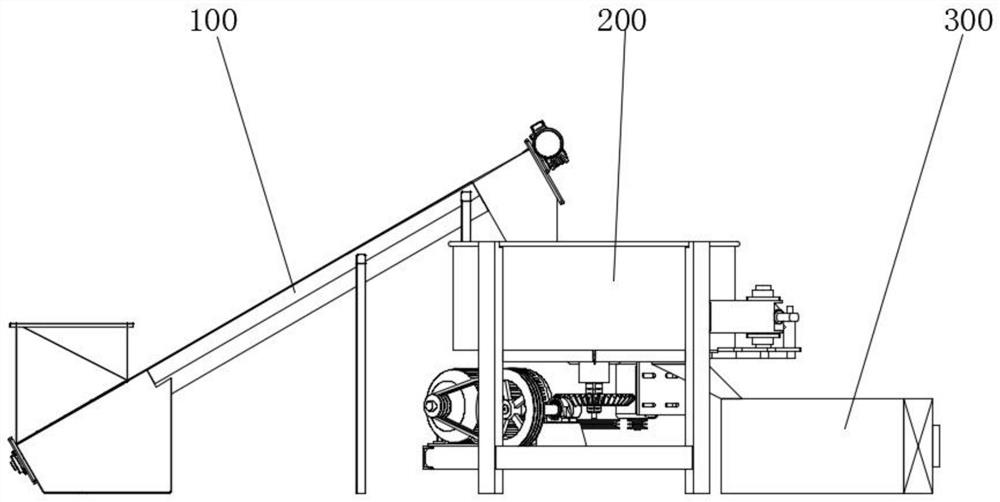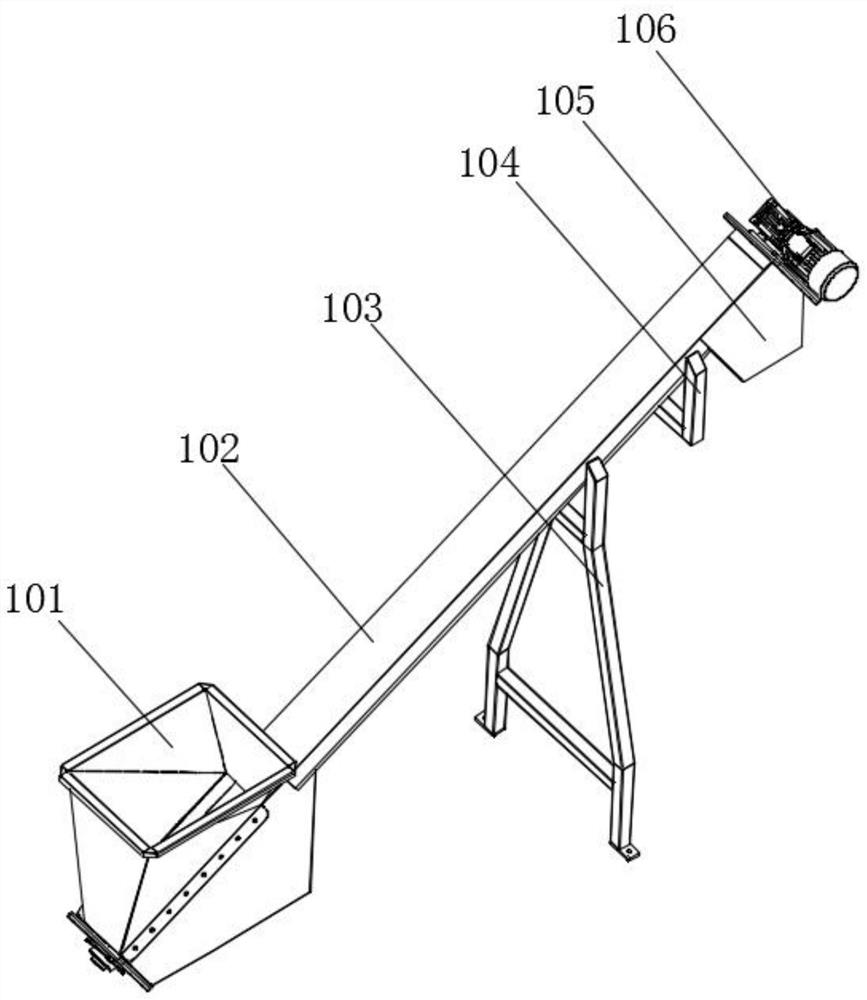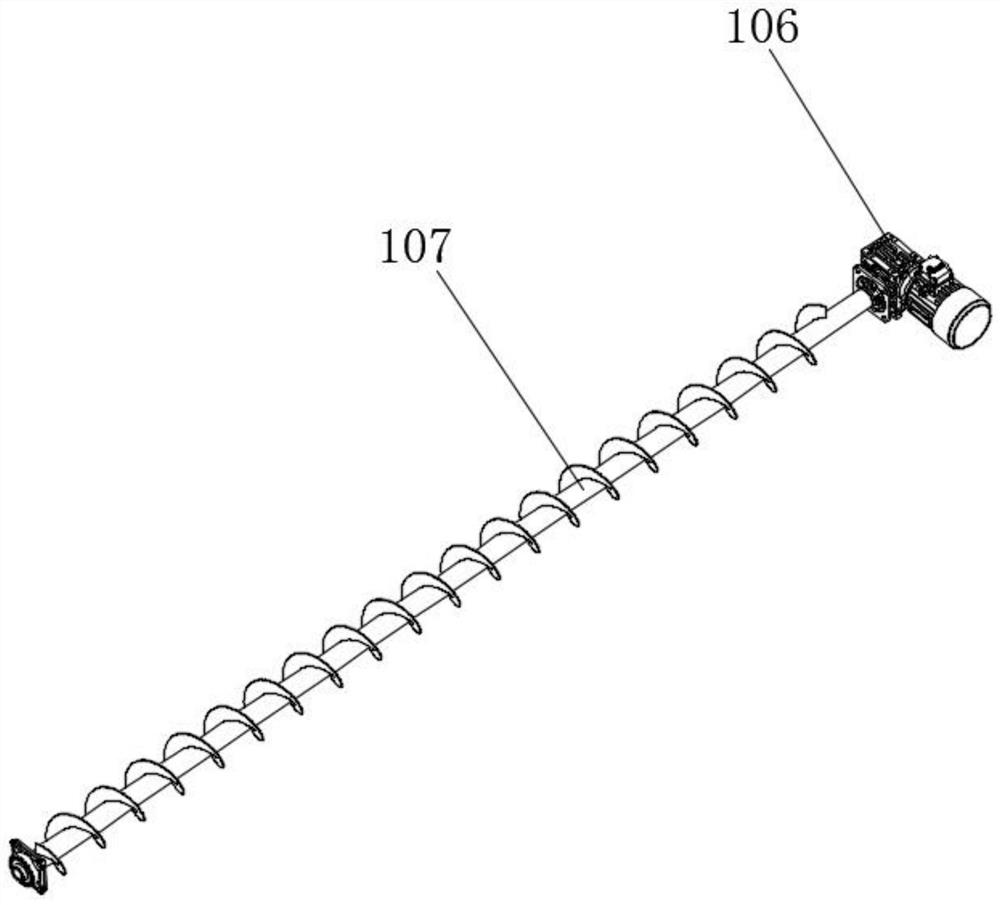High-temperature-resistant anti-cracking concrete and preparation method thereof
A technology of concrete and high temperature resistance, which is applied in the field of concrete and can solve the problems of poor high temperature resistance and crack resistance of concrete
- Summary
- Abstract
- Description
- Claims
- Application Information
AI Technical Summary
Problems solved by technology
Method used
Image
Examples
Embodiment 1
[0052] see Figure 1-9 As shown, the present embodiment is a kind of high-temperature-resistant and crack-resistant concrete, comprising the following components in parts by weight:
[0053] 60 parts of river sand, 100 parts of gravel, 50 parts of cement, 10 parts of water, 2 parts of nano-titanium dioxide, 10 parts of nano-silica, 16 parts of nano-carbon fiber, 3 parts of fly ash, 3 parts of EVA emulsion, 1 part of graphene , 2 parts of naphthalene-based water reducer.
[0054] A preparation method of high-temperature-resistant and crack-resistant concrete, comprising the following steps:
[0055] Step 1: Dissolving the naphthalene-based water reducer in water, then adding graphene, ultrasonically treating the graphene, dispersing the graphene until completely dissolved, and obtaining a graphene solution;
[0056] Step 2: adding EVA emulsion to the graphene solution, stirring evenly, and treating with ultrasonic waves to obtain a mixed solution;
[0057] Step 3: Add the mi...
Embodiment 2
[0066] The difference between this embodiment and Embodiment 1 is that: a high-temperature-resistant and crack-resistant concrete includes the following components in parts by weight:
[0067] 70 parts of river sand, 110 parts of gravel, 60 parts of cement, 15 parts of water, 4 parts of nano-titanium dioxide, 13 parts of nano-silica, 18 parts of nano-carbon fiber, 4 parts of fly ash, 4 parts of EVA emulsion, 3 parts of graphene , 4 parts of naphthalene-based water reducer.
[0068] The performance of the high-temperature-resistant and crack-resistant concrete of Example 2 is detected, and the test results: the compressive strength at 25°C is 64.4Mpa, the compressive strength at 100°C is 60.1Mpa, the compressive strength at 200°C is 58.2Mpa, and the compressive strength at 500°C It is 46.3Mpa.
Embodiment 3
[0070] The difference between this embodiment and Embodiment 1 is that: a high-temperature-resistant and crack-resistant concrete includes the following components in parts by weight:
[0071] 80 parts of river sand, 120 parts of gravel, 70 parts of cement, 20 parts of water, 6 parts of nano-titanium dioxide, 16 parts of nano-silica, 20 parts of nano-carbon fiber, 5 parts of fly ash, 5 parts of EVA emulsion, 5 parts of graphene , 6 parts of naphthalene-based water reducer.
[0072]The performance of the high-temperature-resistant and crack-resistant concrete of Example 3 is detected, and the test results: the compressive strength at 25°C is 65.8Mpa, the compressive strength at 100°C is 62.3Mpa, the compressive strength at 200°C is 58.9Mpa, and the compressive strength at 500°C It is 47.5Mpa.
PUM
| Property | Measurement | Unit |
|---|---|---|
| Compressive strength | aaaaa | aaaaa |
| Compressive strength | aaaaa | aaaaa |
| Compressive strength | aaaaa | aaaaa |
Abstract
Description
Claims
Application Information
 Login to View More
Login to View More - R&D
- Intellectual Property
- Life Sciences
- Materials
- Tech Scout
- Unparalleled Data Quality
- Higher Quality Content
- 60% Fewer Hallucinations
Browse by: Latest US Patents, China's latest patents, Technical Efficacy Thesaurus, Application Domain, Technology Topic, Popular Technical Reports.
© 2025 PatSnap. All rights reserved.Legal|Privacy policy|Modern Slavery Act Transparency Statement|Sitemap|About US| Contact US: help@patsnap.com



